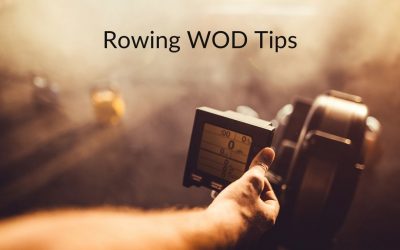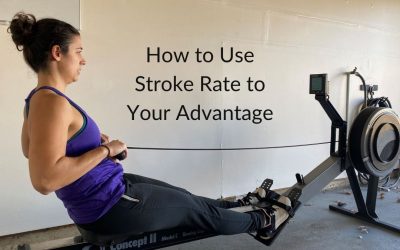Damper and Drag Factor for Rowing Workouts
If you have a Concept2 machine, you’ll notice that there’s some numbers on the side of the flywheel. This is known as the damper setting. It’s important to understand what this setting does, and how it affects your rowing. Not only that, but there’s also a setting called drag factor that is different, but works alongside the machine’s damper setting.
For those without Concept2 brand machines, you may have a separate resistance setting. This may work similarly to the damper setting, but the numbers won’t mean much to you. Feel free to take these tips into context with your brand of machine.
What is the Damper?
Before we get into which number to use, it’s important to understand what the damper setting does.
Looking at the flywheel, there are numbers from 1 to 10 for the damper setting. As you’re reading this, if you’re by your rowing machine I encourage you to follow along and change the setting to see what I am talking about here.
When the damper is set to 1, all of the holes on the side of the flywheel are closed. This restricts the air flow into the flywheel, so the wheel keeps spinning. This is why it feels lighter at a lower damper setting. When the damper is set to 10, then all the holes on the side of the flywheel are open all the way. This causes much more air to be pulled into the flywheel when rowing, which slows down the flywheel between each stroke. The more the flywheel slows down, the heavier each stroke will feel.
An analogy that might help this make more sense is to compare it to gears on a bike. Lower gears feel very light, and you’re able to pedal very fast. Higher gears take much more effort, and can make your pedaling feel very slow.
I hesitate to call the damper setting a resistance setting, since that isn’t entirely true. The rowing machine is a variable resistance machine, which is a fancy way of saying that YOU determine the resistance. The harper you push and pull, the more resistance you’ll feel. The damper setting changes how fast the flywheel slows down, but you determine the resistance.
Ideal Setting
Please, PLEASE don’t row with the damper set to a 10. Just because this is the “heaviest” setting doesn’t mean this is where you should be. In fact, a higher damper setting can make poor rowing feel better, since it feels like you’re doing more work.
An ideal damper setting for any rower is between 3-5. This allows the flywheel to slow down enough to be able to put some power behind each stroke, while also allowing you to be efficient and keep a consistent stroke. Going back to the analogy of gears on a bike, while on the lowest gear it can feel like you’re spinning your wheels, but at the highest gear it’s so hard to pedal! Typically a middle setting for your bike gear is the best, similar to your rowing machine damper setting.
If you’re a beginner, I suggest finding a setting between 3-5 that feels good and keeping it there for all of your workouts. You really don’t need to get into drag factor when you’re just starting out, but if you’re curious on what it is feel free to read on.
Drag Factor
Drag factor is a way to put a more specific number to the damper setting. Not only that, but you can use drag factor to create the same feeling across different Concept2 rowing machines.
In between each stroke, the rowing machine calculates how fast the flywheel is slowing down. This rate of deceleration is known as the drag factor. Different machines can have different drag factors at the same setting. Two rowing machines, one at your house and one at your gym, could have different drag factors when each damper is set to a 4. This can be due to the machine’s location, altitude, age of the machine, or how clean the flywheel is inside.
This is good to know, since you can use the drag factor to match up different machines. By going into your settings to view the drag factor, you can find the drag factor you are most efficient at. Then, when you need to use a different machine you can go into the settings and set the damper for the same drag factor you like to use. This may result in a different damper setting, but the feeling of the flywheel between each stroke will now be the same as what you’re used to.
If you only have one machine to use, you can still use drag factor to fine tune what your most efficient damper setting is for your machine. There are lots of workouts out there to find the damper or drag factor that you’re the most efficient at. If you’re just starting out, this isn’t really necessary. You’ll be just fine using the damper setting and not worrying about the drag factor at all.
Typical drag factors for women are between 95-125. That is a wide range, so feel free to try anything in between that to see where you’re the most efficient. This range is also typically where most newer machines are between a 3-5 damper setting.
Check out the video below for a summary of this post.
How to Improve Your Rowing for WODs
Workouts can take all shapes and sizes. You can go years without repeating a workout that doesn’t have its own name. Sometimes there’s rowing, sometimes there’s not. Most athletes want to get through the rowing portion to get on with the other part of the workout....
How to Use Stroke Rate to Your Advantage
Whether you row in your garage or in a gym, there’s a number on that monitor that you should be paying attention to. And that’s your stroke rate! Most people are only concerned about the split that they are pulling. While that number is very important, it shouldn’t be...
Everything to Know About the Catch Position
There’s a lot that goes into having a good catch position on the rowing machine. A good catch allows you to start your stroke off right and sets you up for success each and every stroke you take. Here is a picture of a good catch position: Here are the big things...



